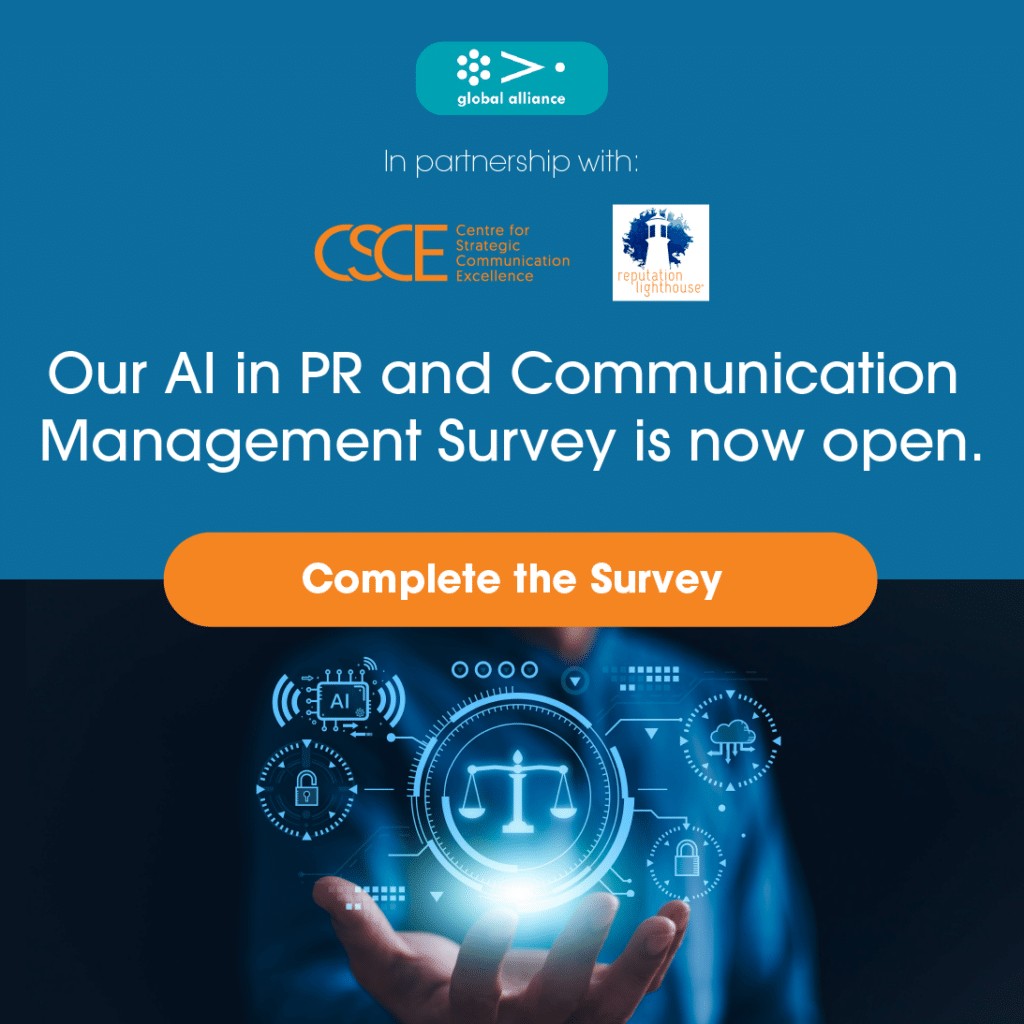Remember when working from home (WFH) was somewhat frowned upon?
You most likely fell into the individual contributor category or the one who was never quite part of the team because you simply were, well, not there. This represented less than 10% of the US working population. But that was before COVID.
State of fear
A year into the pandemic, we don’t yet live in what so many people have – inaccurately – coined as the new normal. Governments around the world are still fighting to gain control over the pandemic through a series of trial and error public safety measures with the hope (read: uncertainty) that the vaccine will stop the virus and everyone can focus on recovery. Although companies have been focusing on fixing any glaring operational and cultural shortcomings that have been exposed by the pandemic, this is still a very volatile environment and it’s not easy to reimagine a sustainable post-pandemic business and brand strategy, company culture and people management approach.
In a strange twist of fate, COVID has reminded organisations just how dependent they are on their most valuable asset: people. The pandemic has accelerated the decline of the long-established beehive mentality in which the office is the main centre of gravity where employees converge to produce value and experience a company’s brand, culture and status.
This disruption runs deeper than one might think. With many employees having retreated to their homes as the operational base where work is performed and value is created for the company, the relationship dynamics between them and their employer is changing. With people’s private and professional spaces intertwined, experiencing and shaping business culture is also changing. However, when the pandemic hit, companies primarily focused on ensuring operational continuity with the organisation’s pre-existing cultural fabric being critical to its success – or failure (for those companies with a toxic or weak culture). It was a truly defining moment for company cultures in action, but functioning at home on COVID-induced high energy, stress and fear is, of course, not sustainable in the long run.
We need a more nuanced approach
Speaking to different professionals from all over the world, it appears that the strongest advocates for the normalisation of WFH are those for whom it is already the norm. Their optimism is understandable. Employee survey data from late last year indicates that, given the circumstances, people seem to have had an overall rather positive experience with WFH.
Numerous studies highlight the benefits of WFH. For example, a 2015 Stanford University study on call centre employees has clearly shown a positive relationship between WFH, productivity and happiness. And while WFH has undoubtedly proven to be surprisingly successful during the pandemic, it’s not quite that simple.
First, those in favour of generalising WFH assume that all jobs are created equal regardless of tasks or different working cultures from one country to another. Of course, not everyone works in a call centre and some jobs simply cannot be performed from the comfort of one’s home. The reality is that a company’s workforce is made up of significant populations of all types of roles, including those who cannot WFH at all. And more importantly, we must also consider some of the underlying dynamics of WFH, where other socio-economic and identity realities impact the diversity and inclusion dynamics. As a matter of fact, a study by McKinsey found that pre-COVID inequalities have actually been amplified by the pandemic…
Second, initial survey data shows that there are significant generational and geographic variations with regards to WFH attitudes. Interestingly, it’s the baby boomers and Generation X who reported the highest WFH satisfaction scores, Generation Z trailing behind with less than 50% in favour and millennials ranking in the middle ranges. Furthermore, employee data shows that people also report lower levels of well-being (loneliness being a much-cited cause) with significantly lower job motivation.
Third, WFH should really become a discussion about redefining the work-life balance and the workplace concept as a whole. This cannot be merely reduced to the location of where people work from. Of course, the location is an important part of the equation since we associate both positive and negative experiences with the office. Consequently, we must under no circumstances let WFH be viewed as an escape from the office – which, frankly, it is largely perceived as – become mainstream!
Last but not least, I believe that all the survey data and assumptions derived from them ought to be corrected for COVID-induced biases. This means accounting for the fact that positive WFH experience data were collected as we were all hunkered down at home, working in a non-normal, COVID-fear fueled environment. As the pandemic becomes endemic and the health risk diminishes, many of the limitations on people’s freedom will be lifted. People may well find themselves in a significantly different predisposition towards their outlook on life, work and the balance between the two.
If left unchecked, there are potentially three fault-lines that could occur in a company’s organisational culture:
- Those who, by choice, wish to WFH and those who don’t. Depending on national labour legislation, there may also be limitations or conditions on making WFH policies mandatory or not. This new workforce distribution will also raise questions with regards to WFH-induced discrimination (i.e. selection, career progression, compensation…).
- Generational – cf. the aforementioned generational preferences and attitudes towards WFH. While generational diversity within a workforce is nothing new, the most recent generations are having a profound impact on business cultures and what the future workplace will look like. Adding WFH to the mix means taking into account varying generational preferences.
- Collar colour – those whose job is materially not suitable for WFH versus the knowledge workers. While this distinction isn’t new but differences in perceived favouritism in work-life balance (between those who can and cannot WFM) could emerge.
Not exactly a clear-cut case for the WFH die-hards, which is why a more nuanced approach is needed. This also begs the question to what extent people’s experience and wishes that were formed during a highly uncertain and fear-fraught environment should inform future decisions. In my opinion, only to a degree, but with at least five trends that emerge strongly:
- Culture is king because employees still form the core of value creation.
- Large scale WFH is here to stay
- But so is the office
- There will be no one size fits all solution
- A sense of meaningfulness and belonging (to a company, a brand a team) will play an even more important part in the work-life balance equation
Location, location, location?
COVID has triggered a comprehensive review of companies’ product (innovation) – brand (reputation) – people (talent) strategies. One such area concerns how businesses create value with a highly decentralised workforce and how to avoid dislocation. And while businesses have adapted well to a still fluctuating environment, merely declaring a generalised WFH policy for an indefinite time seems more like a knee-jerk reaction than a forward-looking strategy.
But WFH is here to stay, and as mentioned above, WFH shouldn’t be sanctioned as a reaction to oppressive corporate offices. It is, therefore, imperative that companies take a holistic approach to redesigning a hybrid workplace that is no longer centred around office presence alone. This means that leadership, engagement and culture building will become even more critical than before.
So the real question will be how the post-COVID workplace will be conducive to providing a sense of meaningfulness and belonging, important contributors to a healthy work-life balance.
Could working from anywhere (WFX) be the solution?
According to a recent study from Global Workplace Analytics, as many as 31% of survey respondents reported that they were already working from home occasionally or on a regular basis before COVID, pointing to a pre-existing acceptance for a hybrid model both on the employee and employer side (driven by increasingly important work-life balance considerations). The same study indicates that the majority of respondents would favour working from home post-COVID about two days per week, or roughly 40% of a five-day working week.
A hybrid model, therefore, seems to be a sound compromise that satisfies both employees and employers – but it also needs to be flexible in its allocation of time and location to accommodate for evolutions in post-COVID preferences – and realities.
While that survey specifically addresses the working from home situation, it doesn’t include remote working (i.e. from any other place than home) and the topic isn’t just a matter of settling the question of location. In May 2020 I suggested that companies ought to consider allowing employees to work from any of a company’s global operations – be that in Singapore, Sao Paulo or Paris – so as to keep a material link with the company and experience its culture by connecting with colleagues abroad or nationally – of course, this begs the question of cost and hot-desking infrastructure.
[ On a side note, real estate companies could have a real opportunity here and become true experts in workplace experience design, not just facility management… #proptech ]
Since WFH is a rather restrictive notion, we need a new business case for the post-COVID workplace. Working from Anywhere, or WFX, could provide useful framework for a new workplace concept by codifying three key variables:
Location from where an employee performs his/her work such as home, beach, any company office or co-working space:
- WFO – Working From Office
- ROW – Remote Office Working (any other or limited number of global company offices with a dedicated co-working space)
- RAW – Remote Anywhere Working (anywhere else with WiFi connection)
Time, or the amount of working time authorised for each location.
Scope of application of such as policy:
- Company-wide
- Department-specific
- Team / individual
| WFX = WFH% + WFO% + ROW% + RAW%
Where:
|
But WFX is probably best described as a communications device to kick-off and codify a more structured response to WFH. But more importantly, it is intended to raise burning questions such as (but not limited to):
- Will the initial WFH enthusiasm fade once the COVID-induced pressure is off?
- How does working from anywhere redefine the psychological contract between an employer and an employee?
- How to avoid creating new classes of employees based on where they choose to work from? How to maintain team cohesion?
- How to address declining job satisfaction and wellbeing stats?
- How to provide a sense of meaningfulness for the work employees perform as an expression of company culture?
- No jab no job? Will we need a vaccination passport to go to work or even obtain a job? What health and safety measures prevail and what responsibility will employers have?
- What are the contractual and regulatory adjustments needed for a new workplace vision? (labour law, insurance, choice of workplace, safety concerns, taxation, etc.)
- How to adapt the definition and measurement of performance management, career progression, learning & development paths, comp & ben…particularly for junior employees who are on a steep learning curve early in their career?
- What leadership/management skills and abilities are needed to lead teams effectively in a WFX environment?
- What impact on the employer value proposition, both internally and externally?
- What is the actual impact on diversity and integration?
- How do companies ensure adequate IT security?
…and the list could go on and on. The diversity of the topics above show that, yet again, WFH is not merely a matter of logistics and IT, but a truly transformational effort requiring a multi-disciplinary approach.
The internal communications opportunity
The non-exhaustive list of questions above highlights a few interesting strategic opportunities for Internal Communications (IC) teams to claim.
Pre-COVID, IC teams have been supporting numerous change and transformational projects with one of the primary concerns being change-fatigue. Adopting a permanent change mentality used to be the mantra of the day.
During COVID, IC teams have rushed to the forefront as the first-responders to support business continuity and resilience initiatives as well as working with HR to support employee safety and well being.
In the post-COVID era, IC teams have the opportunity to take the lead in at least five (+1) key areas:
- Redefining the employer value proposition for all employees and prospective talent (yes, IC needs to lead alignment with the external employer brand and contribute to the corporate brand) to provide a sense of connection to the company and instil meaning into people’s everyday work (to avoid task-based Taylorism 2.0!).
- Reshape the culture by enabling employees to connect with each other and, thereby, create a participative culture-shaping framework.
- Replace the ‘permanent change’ mantra by supporting the deployment of a hyper-flexible and agile operating model.
- Support HR in providing learning platforms to upgrade critical skills needed for the above.
- Support line managers and leaders by transforming them into true brand ambassadors able to more effectively engage with and motivate their teams.
Also, though, more of an (important) sidenote: the workplace demographics are also changing. Driven by Generation Z’ers in particular, they will represent a growing portion of the workforce. The post-COVID era may clearly be the opportunity to consider their voice more strongly when redesigning the workplace – and an employer value proposition (EVP) – for the future.
In short, IC should approach the reframing of company culture as a strategic brand development exercise (for example, consider Simon Sinek’s golden circle as guiding principles). The temptation is too easy to only think of innovative and creative news stories or gamification tactics to engage employees.
IC needs to shape the bigger picture which also means boosting team expertise in marketing/branding as well as in applied psychology by closely working with HR – this is what it takes to get under the skin of IC’s target audience – employees.
Key take-aways
- All-out WFH is not the magic bullet it is often portrayed to be and we need to dispel that myth rather sooner than later.
- Nor is WFX – it’s merely the tip of the iceberg towards designing the post-COVID workplace through a comprehensive transformational effort.
- IC teams have the opportunity to move beyond their first-responder role and lead the redefinition of a framework for the new workplace that employees and prospective talents can meaningfully engage with. This includes claiming a strategic lead role on EVP and, with it, IC teams’ skills, remit and strategic advisory role will have to evolve if they haven’t already done so…the clock is ticking!
You might think that the sea-change moment for IC occurred with the outbreak of the pandemic – but that was merely the catalyst allowing IC teams to sustainably claim strategic ownership to shape the employee experience at the heart of the business strategy.





